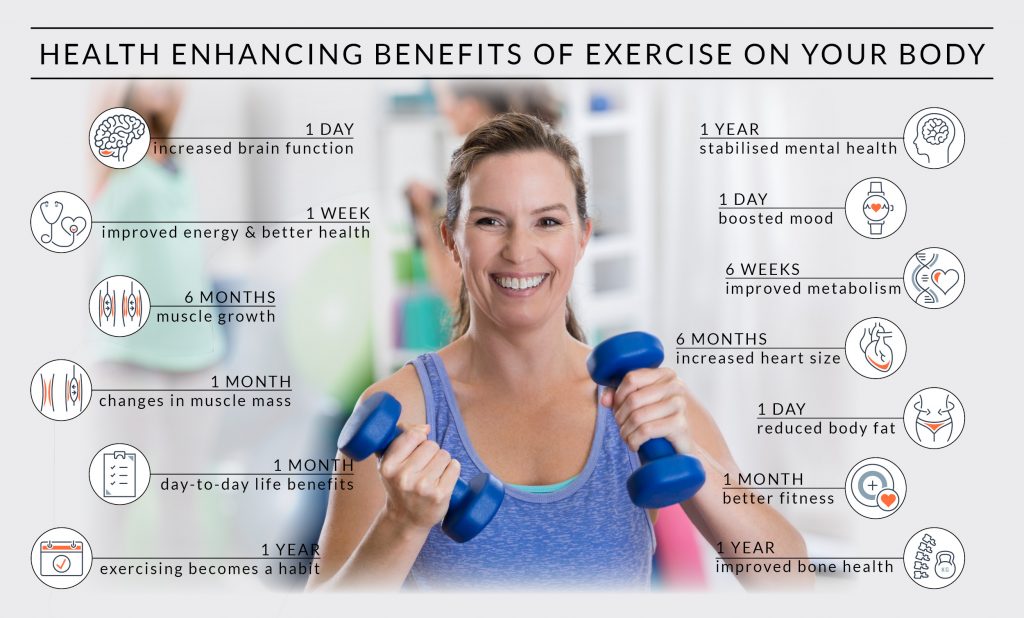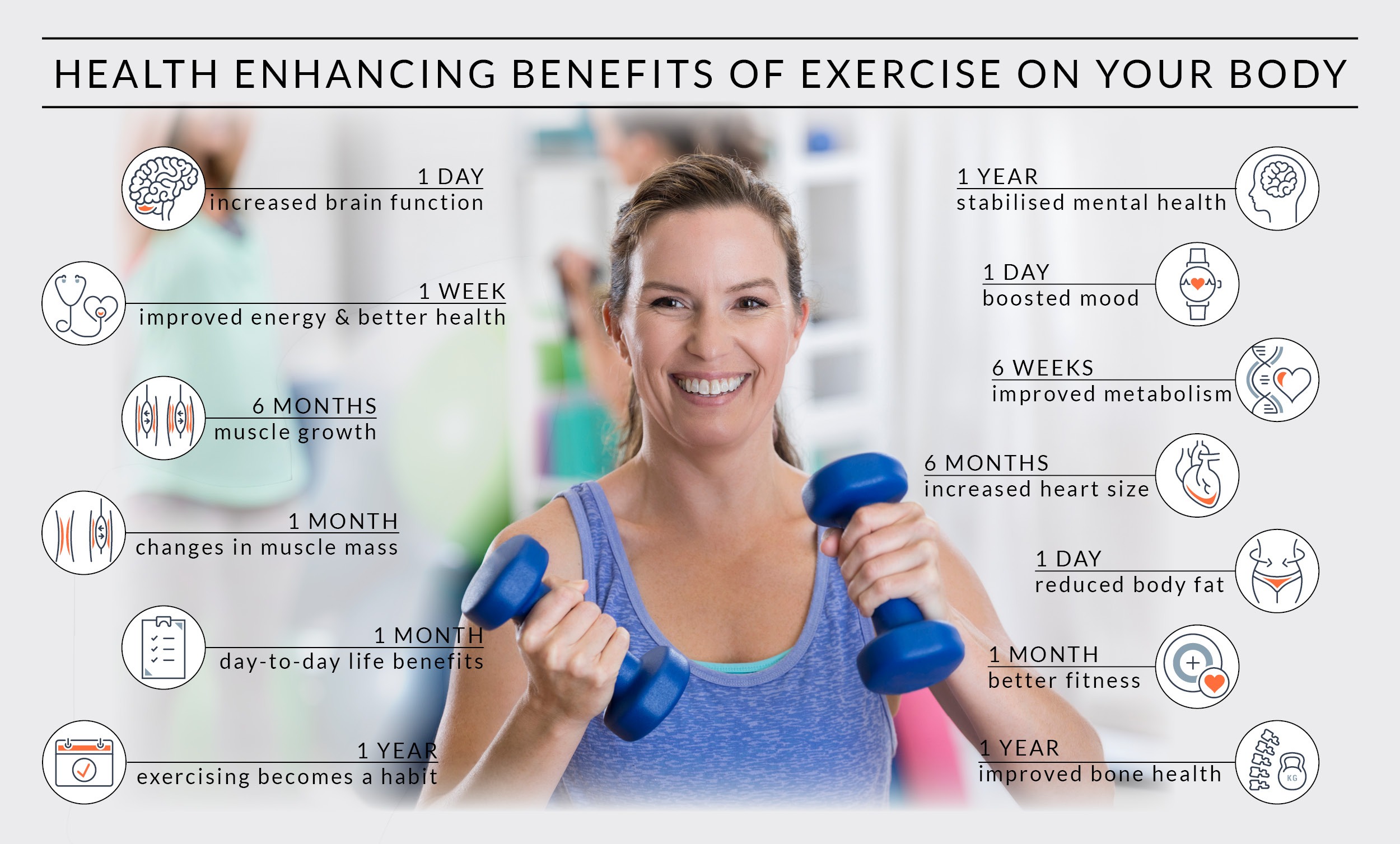
When it comes to physical activity/exercise, is the “pain worth the gain?”
Are the benefits received in return for our actions/fitness goals worth the time invested? And, “how long will it be before we actually see/feel positive body changes taking effect?”
Whether a beginner or “re-starter,” to a fitness program, these are all valid questions.
Let us take a brief look at the timeline of “bodily changes” once consistent exercise is implemented.
Exercise Timeline –
After 1 day:
Just one day of exercise benefits the body. Although these benefits are more subtle and something we cannot yet appreciate in our mirrored reflection at this early stage of fitness, they are happening.
Increased blood flow to the muscles which in turn benefits the brain making us more alert and awake while exercising with increased focus after.
Boosted mood. Challenging exercise includes some pain causing the brain to release chemicals including endorphins, the source of euphoria that not only kills the pain but helps to cement our dedication to push harder.
Fat storage is mobilized. The body’s energy expenditure increases when we begin moving and the energy burned comes primarily from glucose stored in the body as glycogen. Glycogen is a product of the liver when it processes carbs. When glycogen levels are decreased, the body starts turning fat and protein into glucose to help meet increasing energy demands.
This means the body starts losing body fat if calories in are kept below calories out. Do not expect to lose fat if your diet consists of fast food burgers and fries after just 30 minutes at the gym. To avoid cheating, and to keep yourself accountable, track your nutrition.
One week into working-out:
A few workouts increase the mitochondria – the “power generators” in our cells. They turn oxygen and nutrients into adenosine triphosphate (ATP) that powers the metabolic activities of our cells.
Cells with more mitochondria are better protected, stronger and more efficient at energy production leading to improved general health and well-being along with making it easier to exercise from this point forward.
One month into working out:
Muscle mass changes become visible. Muscles get stronger as both slow and fast twitch muscle fibers in muscles cells begin growing.
Metabolic rate increases because of stronger, fitter muscles. Calories are burned at a rested state (when not actively working out). Those extra pounds drop faster and easier because our metabolism is working 24/7.
More challenging workouts.
As the body gets fitter, higher intensity, higher reps, heavier weights, and longer cardio sessions are the natural result. This boost releases more endorphins and these feel-good endorphins ultimately shift the mind into a better, healthier, happier place.
Basic living skills such as climbing stairs without gasping after one floor or playing physical games with our children become easier. When we are in command and don’t need to rely on others for help with basic living skills, life in general shifts to a more joyous experience.
Six months of working out:
This is what we wait for – hard earned compliments from friends and family as muscle growth is clearly visible at this stage. We feel empowered, have greater endurance and are not afraid to continue challenging ourselves with heavier weights and increased difficulty in training.
Exercise increases the need for more oxygen, so the heart rate increases to pump more blood and increase oxygen circulation. After six months or so, the heart gets stronger and more efficient.
Resting heart rate and blood pressure decrease which lowers the risk of heart attack.
Providing a regular resistance program is followed, within 3-6 months an individual will experience and notice a 25 to 100% improvement in muscular fitness.
One year of working out:
Our muscles and our bones benefit. Healthy weight along with exercise has significant positive influences on our bone health. Weight bearing exercises are particularly effective. Running, jumping rope, stair climbing, and skiing are all examples of weight bearing exercises. Resistance training also improves bone density.
Changes occur in our skeleton after about 6 months with bone density increasing after 12 months. Higher bone density means lower chance of fracture.
After one year of working out, exercising is no longer an obligation but something we look forward to because of the health benefits and positive body changes we experience. It is now an enjoyable activity that some even become addicted to. They just can’t wait to get exercising.
There’s a saying in the health and fitness industry that goes “It takes 4 weeks for you to see some changes, 8 weeks for your friends to see the changes, 12 weeks for the rest of the world to see the change.”
Now that you know the timeline, it’s time to get up and get exercising so you too can experience the positive body changes, both mental and physical that exercising affords us.
You can gain vitality, muscular strength, endurance and lead a higher quality of life…
It’s time to take command of your life through lifestyle changes and exercise is the perfect place to start.
“Healthy Self Healing” can help you do just that…
For more tools and resources from Carolyn Hansen to assist you in attaining your health and fitness goals please visit:

